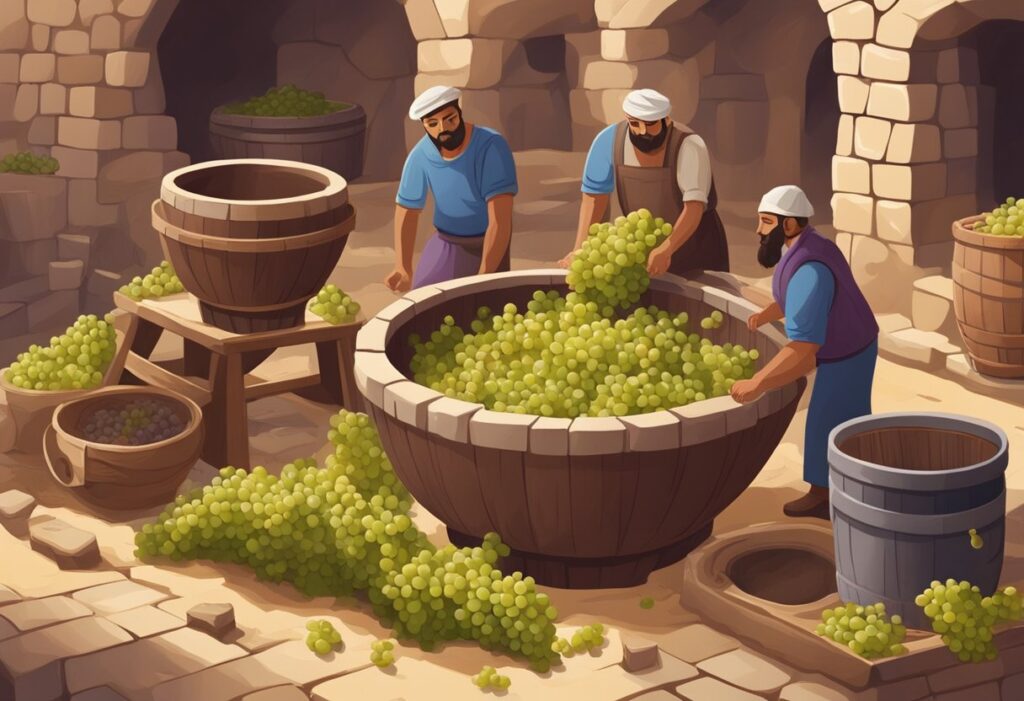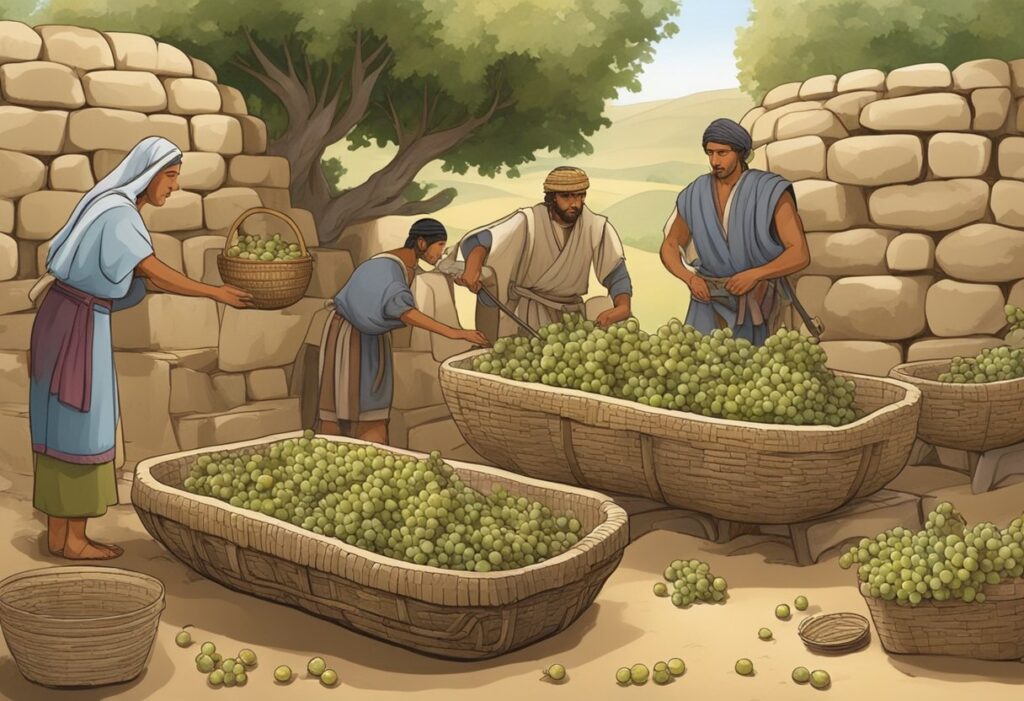Wine has always played a significant role in human culture, but in the Roman Empire, it was nothing short of essential. The Roman belief that wine was a daily necessity made it a staple for everyone, from slaves to aristocrats. This democratization of wine led to the rapid spread of viticulture across the empire, ensuring that every corner—from Gaul to Hispania—was steeped in vineyards.
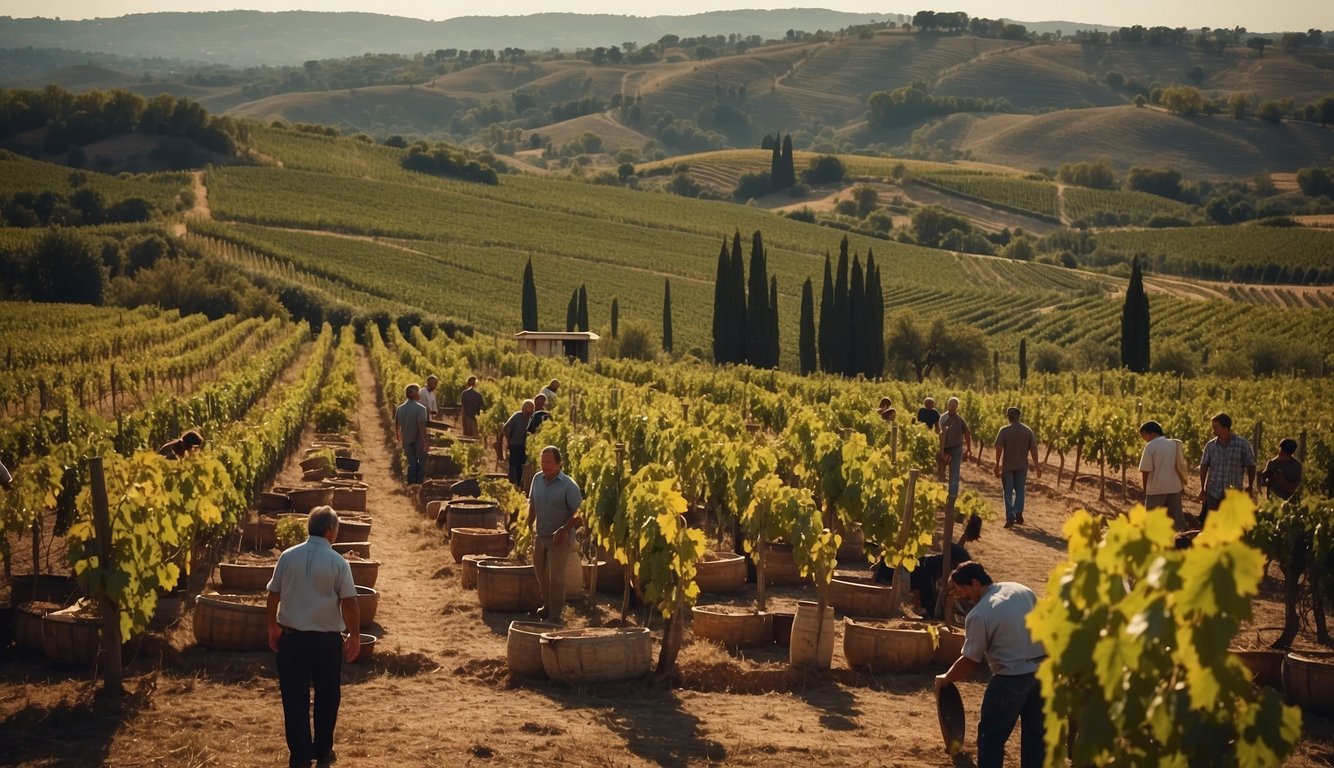
As you explore the history of wine in ancient Rome, you’ll discover that wine wasn’t just a drink but an integral part of social and economic life. To secure a steady supply of wine for their soldiers and settlers, the Romans propagated viticulture to every region they conquered. This expansion transformed the empire into a vast network of vineyards, each contributing to the rich tapestry of Roman culture.
The fascinating traces of ancient viticulture practices can be found through archaeological markers and historical texts. From the ancient presses uncovered around Rome to the cultivation techniques adopted from the Etruscans, these remnants tell the story of how wine helped forge a civilization. Dive into this captivating history, and you’ll see how wine was more than just a beverage; it was a unifying force that permeated every aspect of Roman life.
Origins of Roman Viticulture
Understanding the origins of Roman viticulture involves looking at the influences of the Etruscans and Greeks, the domestication of Vitis Vinifera, and the early wine culture in Rome. Each of these factors played a crucial role in shaping the wine traditions that became integral to Roman life.
Etruscan and Greek Influence
The Etruscans were central to the early cultivation of wine grapes on the Italian peninsula. They trained grapevines to grow up live trees, a method known as lambruscaia. This innovative approach made viticulture an important economic activity. Their practices laid the groundwork for later Roman advancements.
Meanwhile, Greek settlers also played a significant role. They introduced grape varieties and winemaking techniques to southern Italy. The Greeks’ expertise in blending wines with herbs and spices influenced Roman preferences and practices. You can learn more about the influence of the Etruscans here.
Domestication of Vitis Vinifera
The domestication of Vitis vinifera, the common grapevine, was a vital step in the evolution of Roman viticulture. Archaeological finds, such as the discovery of grapevine pips in Tuscany, offer insights into early vineyard management. These grapes were selected and bred for desirable traits like sweetness and ease of cultivation.
The Romans improved these techniques, developing large-scale vineyard operations. This advancement allowed for the mass production of wine, which became a staple of Roman society. Discover more about this domestication process here.
Early Roman Wine Culture
Wine was much more than a beverage in ancient Rome; it was a cultural cornerstone. The Romans held festivals honoring Bacchus, the god of wine, and used wine in religious rituals. Social gatherings and meals were incomplete without wine, reflecting its deep integration into daily life.
Technological advancements in winemaking paralleled these cultural developments. They built extensive storage facilities, like the dolium, for aging and transporting wine. The spread of Roman viticulture was not only an agricultural achievement but a cultural phenomenon. You can read more about the early Roman wine culture here.
By understanding these origins, you gain insight into how viticulture shaped not just the economy but also the social and religious fabric of ancient Rome.
Expansion Throughout the Empire
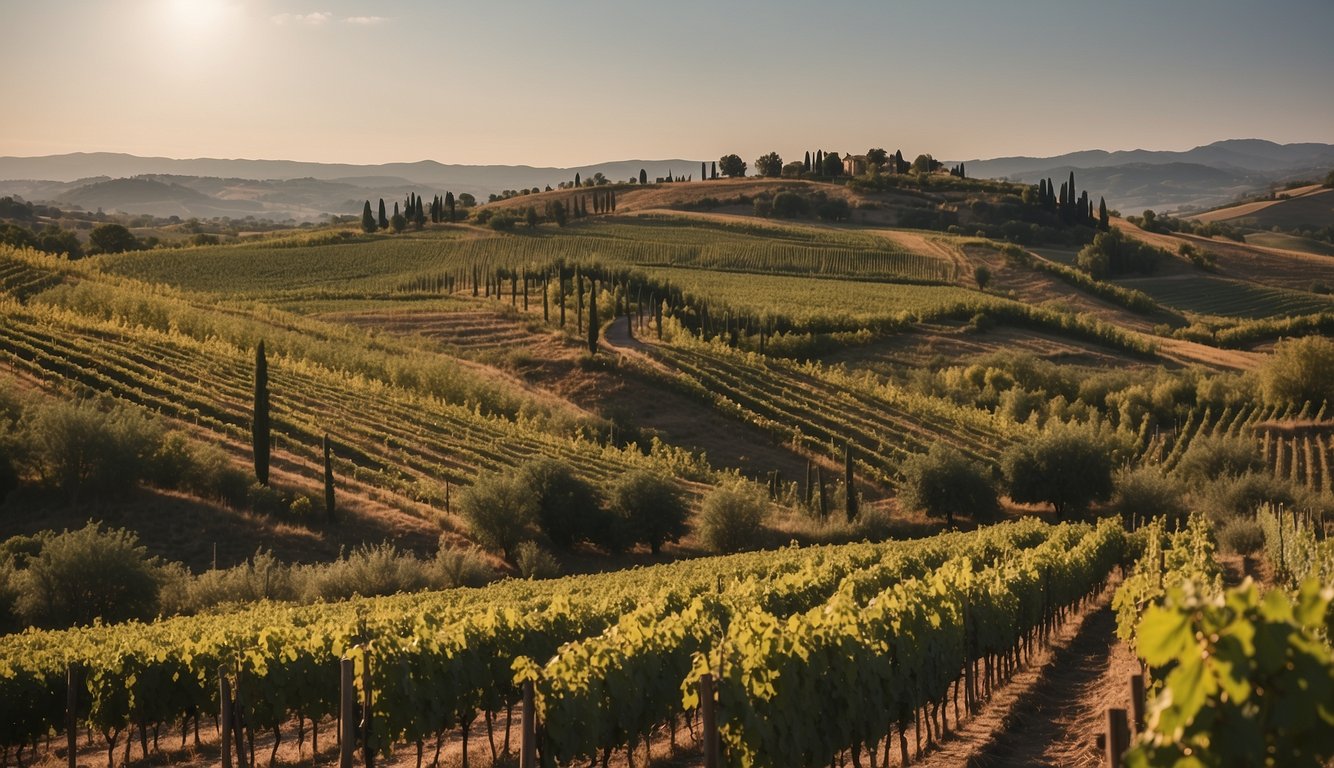
Viticulture flourished throughout the Roman Empire due to military conquests and colonization. The Romans established vineyards in newly conquered territories like Gaul and Spain, promoting adaptation and diversification in grape cultivation.
Conquest and Colonization
When Romans conquered new lands, they often brought their agricultural practices with them. Establishing vineyards in these territories helped sustain and expand their wine trade. The Roman army played a significant role in this process, planting vines in numerous regions.
As you navigate the Roman Empire’s expansion, you see how viticulture was integral to its economy. Conquered lands were not only integrated politically but also agriculturally. This method promoted the establishment of vineyards and wine production across the Empire.
Viticulture in Gaul and Spain
Gaul and Spain are prime examples of how viticulture spread through the Empire. In Gaul, the Romans took advantage of the local climate and soil. The expansion led to the early foundation of wine regions that are still renowned today, like Bordeaux.
Spain saw a similar transformation. Romans introduced advanced viticultural techniques, which permanently influenced the region’s wine landscape. Vineyards became widespread, contributing significantly to the local economy and wine industry in these regions. The combination of local resources and Roman expertise created a thriving wine trade network.
Adaptation and Diversification
Roman viticulture did not just replicate practices but also adapted them to local conditions. This led to significant genetic diversity in grape varieties. Local farmers and Roman settlers worked together, experimenting with new methods to improve yield and quality.
The diversification in grape varieties meant that wines from different regions had unique characteristics. This not only boosted the appeal of Roman wines but also solidified the cultural and economic importance of viticulture. You can see how adaptation to local environments fostered a variety of wine profiles across the Empire.
Each newly cultivated region added its unique touch, enriching the Roman wine spectrum. This dynamic interplay between tradition and innovation was a hallmark of Roman viticulture, leaving a lasting legacy on the wine industry.
Wine Production Techniques
In Ancient Rome, winemaking became an advanced art, driven by innovative techniques. Important figures like Cato, Varro, and Pliny the Elder contributed significantly to the practices.
Ancient Winemaking
Ancient Roman winemaking borrowed techniques from the Greeks and Etruscans. Romans used stone presses to crush grapes and wooden vats to ferment the juice.
Cato, a Roman author, provided guidelines on grape selection and fermentation methods in his writings. Ceramic vessels, known as amphorae, were used to store and age wine. These amphorae were often sealed with resin to protect the wine from air, which could spoil it.
Vineyard Management
In vineyard management, pruning was essential. Romans developed trellising techniques to support grapevines, using stakes and trellises to allow for better air circulation and sun exposure.
Varro and Columella wrote detailed works on agriculture, including the importance of soil health and proper pruning methods to increase grape yields and improve quality. They recommended planting grapevines in rows and spacing them to avoid overcrowding, enhancing the overall vineyard productivity.
Advances in Preservation and Transport
Romans made significant advances in wine preservation and transport. They used wooden barrels, which they adopted from the Gauls, to age wine and facilitate transportation. This method was more efficient than using amphorae alone, as barrels were more durable and easier to handle.
Amphorae still played a critical role in transporting wine across the empire. They were loaded onto ships and transported to various regions. Even Pliny the Elder noted the importance of properly sealing amphorae to keep the wine fresh during long journeys.
These techniques ensured that Roman wine remained a significant part of their culture and economy.
Cultural and Economic Impact
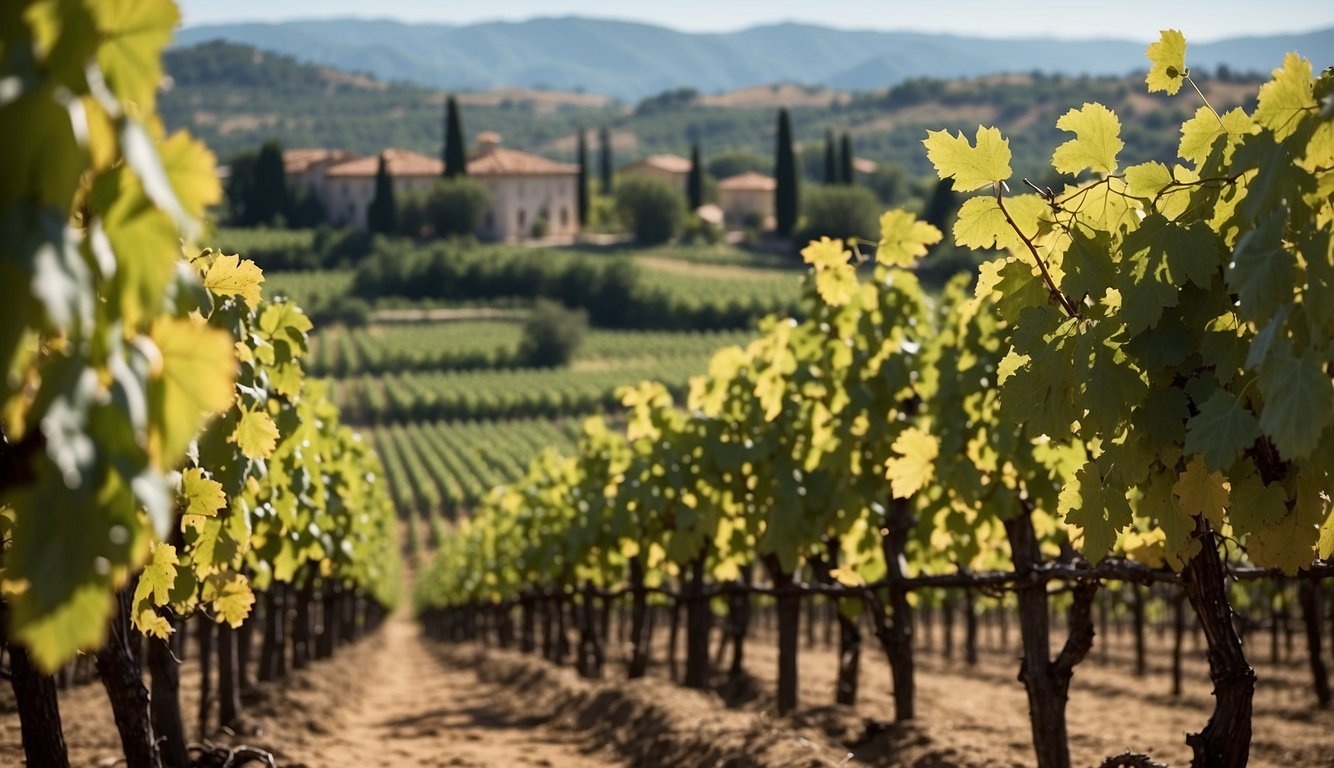
The spread of viticulture through the Roman Empire had significant effects on both cultural and economic fronts. Wine was deeply embedded in daily life and religious practices, and its trade fostered economic growth across the empire.
Wine in Religion and Society
Wine played a vital role in ancient Roman religion and society. Bacchus, the Roman god of wine, was celebrated in many festivals and rites. These celebrations often involved copious amounts of wine, reinforcing its importance in religious ceremonies.
In social settings, wine was a common feature at banquets and gatherings. Both men and women participated in these events, although women were often expected to drink less. Wine also accompanied food, enhancing meals and showcasing its role in food and wine pairings.
The influence of earlier cultures, like the Etruscan civilization, helped shape Roman wine culture. The Etruscans were known to have sophisticated wine-making techniques, which the Romans adopted and improved.
Wine Trade and Roman Economy
The wine trade was crucial to the Roman economy. As the empire expanded, so did the demand for wine. This led to the establishment of a market economy where wine became a valuable commodity. Regions within the empire, such as Gaul and Hispania, specialized in wine production and traded extensively with Rome.
Wine was often transported in amphorae, large clay containers that allowed for easy shipment across long distances. This facilitated trade within the empire and beyond, spreading Roman viticulture practices far and wide.
The economic implications were immense. Revenue from wine trade contributed significantly to the prosperity of the Roman Empire, funding public projects and enriching merchants.
Legacy of Roman Viticulture
The legacy of Roman viticulture is still evident today. The Romans pioneered several wine-making techniques that are still in use, such as the use of barrels for aging wine and sulfur to preserve it. They also categorized wines based on various factors like origin and quality.
Even after the fall of the Roman Empire, their viticulture practices continued to influence global wine industry. The spread of grape varieties and cultivation techniques pioneered by the Romans permeated Europe and shaped modern wine production.
Regions like France, Spain, and Italy owe much of their wine culture to Roman innovations. This enduring legacy highlights the profound cultural and economic impact that Roman viticulture had on the world.
Regional Developments and Varieties
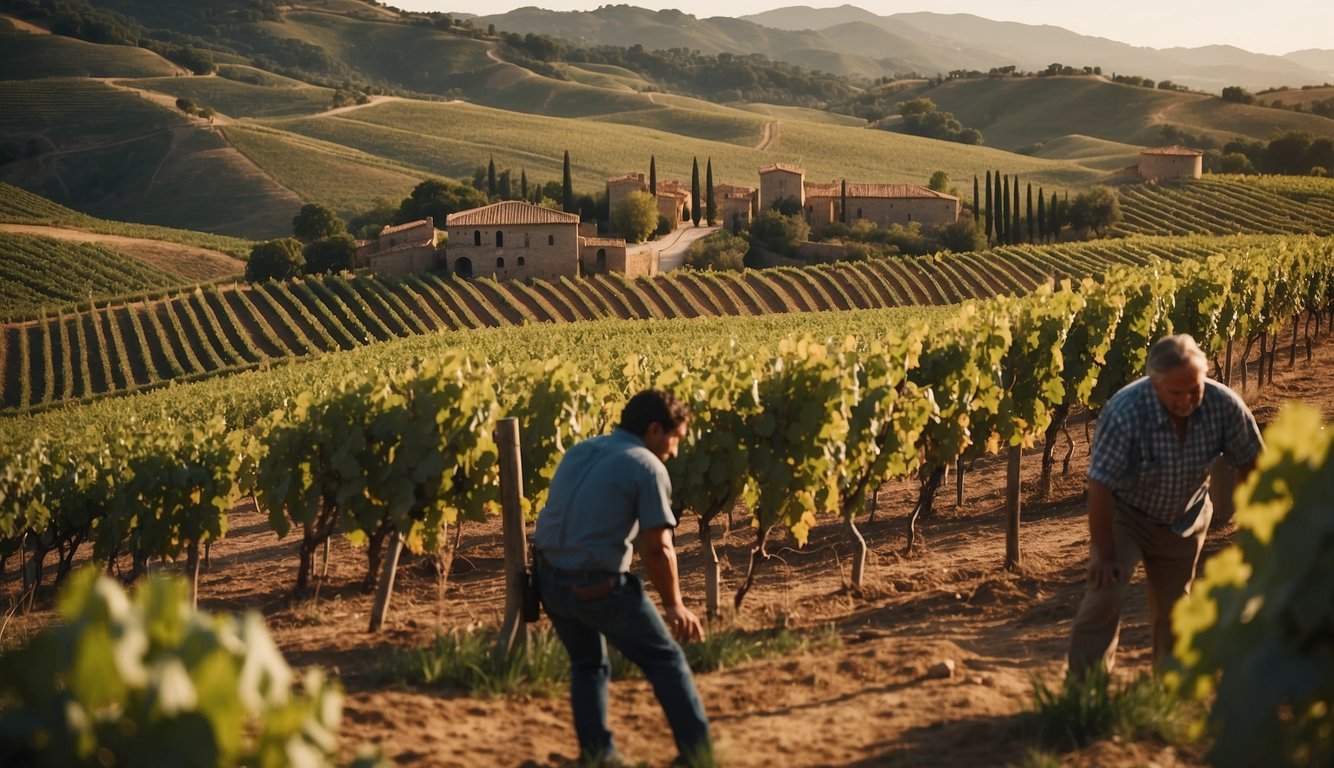
Regional developments in the Roman Empire were marked by diverse wine regions and unique grape varieties. The impact of Roman viticulture extends to modern techniques and grape hybrids.
Famous Wine Regions of the Empire
The Roman Empire was known for its extensive wine regions. Italy was a central hub, especially Tuscany and Sicily. These areas produced high-quality wines, thanks to their favorable climate and soil.
France also became renowned, with regions like Champagne gaining fame for their distinctive wines. The Roman influence extended into what is now Germany, where Romans introduced viticulture to the banks of the Rhine River. Each region developed unique techniques and wine styles that continue to influence modern winemaking.
Grape Varieties and Hybridization
Romans cultivated a variety of grapes, developing hybrids to improve flavor and yield. Vitis vinifera, a primary grape species, was central to their efforts. They experimented with grape hybridization to create abundant and resilient vines.
Hybridization allowed the Romans to adapt grape cultivation to different geographical areas. They introduced new grape varieties to regions like France and Germany, enhancing the diversity of wines. Romans took pride in their wine production, often celebrating their favorite grape varieties.
Influence on Modern Viticulture
The Roman legacy in viticulture is evident in today’s practices. Techniques and grape varieties from the Roman era are still in use. Methods like pruning, trellising, and fermentation were developed and refined by the Romans.
You can see the continued influence of these practices in regions like Champagne and Tuscany. Modern cultivars owe their existence to the crossbreeding and cultivation techniques pioneered by Roman viticulturists. This ancient knowledge has helped shape the wine industry, making it what it is today.
